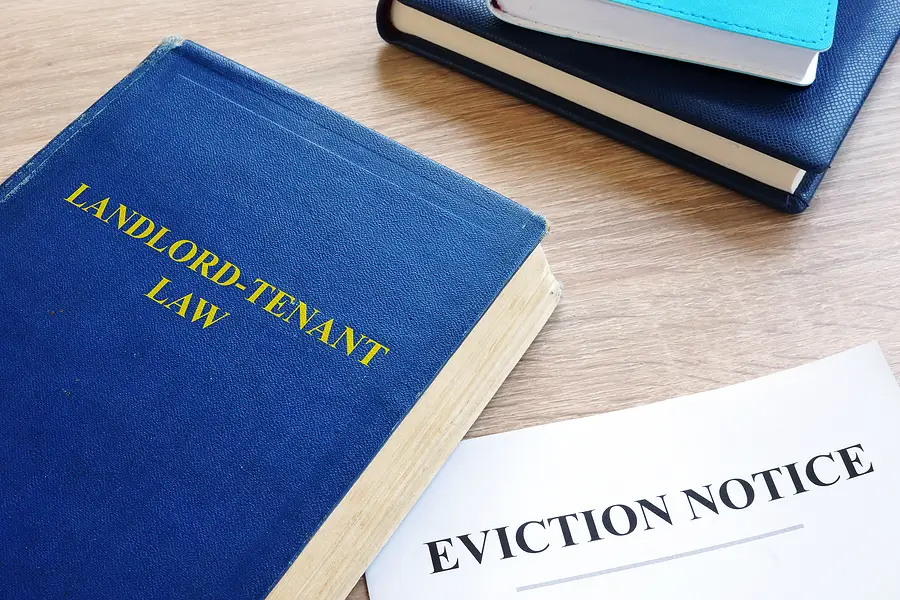Every landlord hits a wall eventually. Missed rent, broken lease rules, or worse—tenants who won’t play by the book. In 2024, Utah recorded 8,155 eviction filings, maintaining a stable rate compared to the previous year.
However, with the state's rental housing stock increasing from 340,000 units in 2023 to 350,000 in 2024, eviction filings as a percentage of rental households dropped from 2.4% to 2.3%, continuing Utah’s downward trend in eviction rates.
If you’re serious about protecting your rental income and staying on the right side of the law, you need to fully understand the state’s eviction process. The more you know, the smoother it goes, and the faster you can get problem tenants out and move forward.
This guide walks you through the entire eviction process in Utah, one step at a time.
Step 1. What Counts as a Legal Reason to Evict and What’s the Right Notice to Serve
Eviction isn’t about personal disagreements. According to Utah State Courts, you need a clear, legal reason to move forward.
These notice types are crucial early steps in the eviction process in Utah, and timing them correctly helps ensure that everything is legal and on track.
- Unpaid Rent – If the tenant fails to pay the rent or the tenant violates the lease agreement, you can issue a 3-day Utah eviction notice to pay rent or vacate.
- Lease Violations – This covers things like unauthorized pets, smoking indoors, or breaking any lease or rental agreement.
- Criminal Activity – If there’s drug use, violence, or other illegal activity on the property, you can serve a 3-day eviction notice to vacate, or it can lead to immediate eviction with the help of law enforcement officials.
- At-Will or Month-to-Month Tenants – If there is no written rental agreement (oral or written lease), such as when a guest refuses to leave or the rental agreement has expired, you must provide a 5-day notice to vacate. This notice orders the tenant to move out within five calendar days with no other options.
- New Owner with Month-to-Month Tenancy – If a new owner purchases the property and the tenant has a month-to-month rental period, the new owner must serve a 15-day notice to vacate before ending the rental.
Before you can start the legal process of Utah eviction laws, you need to serve the tenant with the proper written notice.
Utah law clearly states which notice to use, depending on the situation. You can serve it in person, by mail, or by posting it on their door. If the issue isn’t resolved or they don’t move out, you’re ready to proceed to step three.
If your reason doesn’t fit into one of these categories, you should consult Utah’s landlord-tenant laws before making a move.
Step 2. File in Court
If the tenant remains in the property without paying rent, landlords can file an eviction complaint and summons with your local district court, which is the next step in the eviction process in Utah. Here’s what you’ll need to provide:
- The lease agreement – To show the terms.
- A copy of the eviction documents – To prove you gave them a fair warning.
- Payment records – To show any nonpayment of rent.
- Any relevant texts or emails – To back up your lawful eviction case.
Once everything is filed, the court will serve the tenant. They have three business days to respond. If they don’t, the next step is on you.
Step 3. Go to the Hearing
Next up: the court hearing, also known as an occupancy hearing. If the tenant files a response and decides to fight, the judge might schedule an evidentiary hearing. But if they don’t show up or respond at all, you could win by default judgment, meaning the court sides with you automatically.
Either way, you’re one step closer to resolving the issue. It’s a critical point in the eviction process in Utah, where being organized can make all the difference. Stay prepared with all your eviction and court documents and any evidence you’ve collected.
Step 4. Judgment and Possession
If the court rules in your favor, you’ll receive a court order for possession—basically, the legal right to take back your property. In addition, you may also be awarded any back rent and court costs.
At this point, you’re officially one step away from regaining control of your rental unit. It's time to move forward and get your property back.
Step 5. Order of Restitution
This is your green light. Once the court signs the order of restitution, the tenant has three business days to leave. If they don’t, law enforcement officers will intervene to remove them and oversee the handling of their personal property.
By this stage, you've regained control of your rental premises, and the eviction action process in Utah is complete.
How Long Does This All Take?
It moves faster than most people expect—if everything runs smoothly. Here’s the rough timeline:
- Notice period: 3 to 15 days (depending on the issue)
- Filing to court hearing: about 1 to 2 weeks
- Hearing to move out: 3 to 7 days if the court sides with you
Start to finish, you’re looking at roughly 2 to 4 weeks. Add time if the tenant pushes back or if paperwork gets held up. If the tenant pays back, then the eviction process won't continue.
Outsmart Lease Violations Before They Turn Into Legal Trouble!
Eviction hearings are stressful, time-consuming, and loaded with legal procedures. One wrong step, such as an invalid notice or a missed deadline, and the whole process starts over. That’s where we come in. At TierOne Real Estate, we take the pressure off Utah landlords across Salt Lake City by handling evictions the right way, from start to finish.
Whether you’re dealing with nonpayment of rent, lease violations, or a tenant who won’t leave, our team can step in and manage the entire eviction process. Here's how we help:
- Serve the proper notice (so it holds up in court)
- File all court eviction documents quickly and accurately
- Represent you at hearings so you don’t have to show up
- Handle tenant communication legally and professionally
- Improve your tenant screening to help prevent future evictions
If you're dealing with a difficult renter or want peace of mind, schedule a FREE consultation with us. Let’s protect your rental property the smart way. Don’t wait until things get worse. Take control now!
FAQs About Evictions in Utah
Can a landlord evict tenants for having unauthorized occupants or subletting?
Yes, in Utah, unauthorized occupants or subletting without the landlord's consent are valid grounds for eviction. In such cases, landlords can issue a 3-day lease violation notice to vacate.
What happens if a tenant is on active military duty during eviction proceedings?
If a tenant is on active military duty, the court may delay eviction trial proceedings for up to 90 days. This protection is provided under the Servicemembers Civil Relief Act to ensure that service members are not disadvantaged due to their duties.
Are there different eviction lawsuit procedures in various Utah counties?
While the fundamental Utah eviction process timeline is consistent across the state, some counties may have slight procedural variations. To ensure compliance with specific county requirements, it's advisable to consult local court rules or seek legal assistance.
Related Articles
What Landlords Must Know About Salt Lake City Rental Laws
Effective Lease Enforcement Tips for Salt Lake City Landlords: Lease Violations and Resolutions
What Makes TierOne’s Satisfaction Guarantees Impressive for Salt Lake City Landlords



